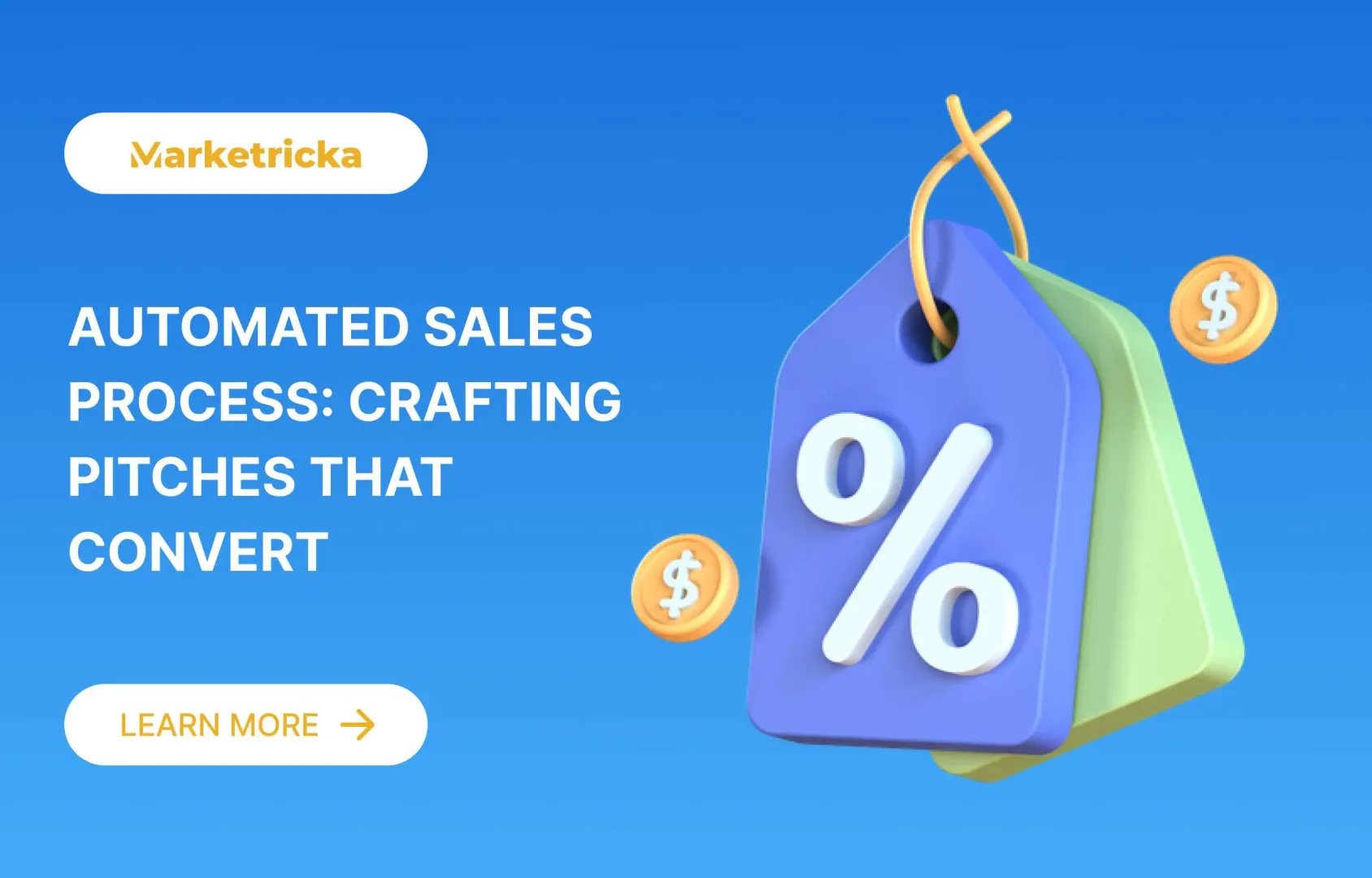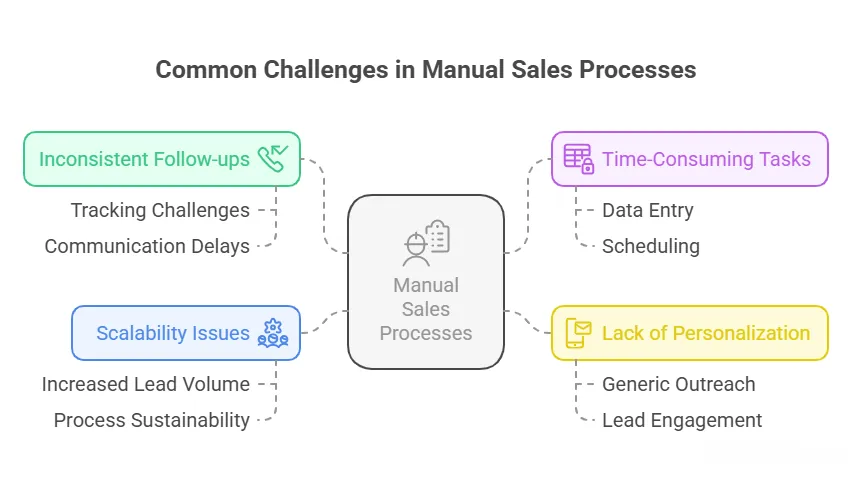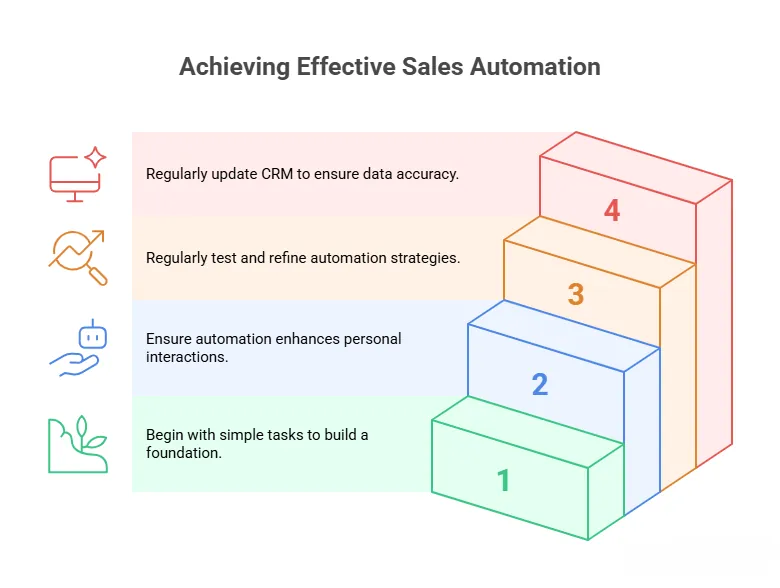Automated Sales Process: Crafting Pitches that Convert
Streamline your sales with an automated sales process. Learn how to craft personalized, high-converting pitches using smart automation tools and strategies.

Summary:
Sales teams often struggle with inconsistent follow-ups, missed opportunities, and a lack of personalization. These issues lead to lost revenue and frustrated prospects. But what if you could automate the repetitive, time-consuming parts of your sales process and focus on what truly matters—building relationships and closing deals?
In this blog, we’ll explore how to use automation not just to save time, but to craft smarter, more effective sales pitches that truly convert. From tools and techniques to best practices, you’ll learn how automation can help you close more deals by focusing on what matters most—connecting with your prospects in a meaningful way.
What is an Automated Sales Process?
An automated sales process uses technology to handle repetitive tasks, allowing your sales team to focus on high-value activities. This includes automating:
Lead engagement through personalized, timed email sequences
Follow-ups based on user behavior and email interactions
CRM updates and data entry, reducing human error
Task assignment and lead routing to the right sales rep
Lead scoring to prioritize high-potential prospects
By automating these tasks, businesses can maintain consistent communication with potential customers, ensuring no lead gets missed.
Common Challenges in Manual Sales Processes
Sales teams often face several challenges when depending on manual processes:

Inconsistent Follow-ups: Manual tracking can lead to missed or delayed follow-ups.
Time-Consuming Tasks: Manual data entry and scheduling consume valuable time.
Lack of Personalization: Generic outreach can result in disengaged leads.
Scalability Issues: As lead volume increases, manual processes become unsustainable.
These issues don’t just slow down your process—they directly impact your revenue.
How to Build an Effective Automated Sales Workflow
To build a robust automated sales process, consider integrating the following components:
1) CRM Integration
Keep all customer information in one place so your team can easily track conversations and manage relationships.
2) Email Automation
Send automated emails to keep in contact with leads throughout their buying journey.
3) Lead Scoring
Rank your leads based on how interested they are, so your team knows who to focus on first.
4) Task & Reminder Automation
Auto-assign tasks based on lead behavior or deal stage. For example, if a lead opens an email 3 times, assign a task for a salesperson to call them.
5) Sales Pipeline Automation
Automatically move leads through the pipeline as they hit key milestones. This keeps your funnel flowing without constant manual updates.
Benefits of Sales Automation
Implementing a strong automated sales process delivers real business value:

Increased Efficiency: Automate routine tasks, freeing up time for important activities.
Consistency: Make sure you communicate and follow up the same way with everyone.
Scalability: Easily manage a growing number of leads without compromising quality.
Data-Driven Insights: Use analytics to improve strategies and boost conversion rates.
By automating your sales processes, you can achieve a more organized and effective sales strategy.
Crafting Pitches that Convert (with Automation)
Even with automation, the quality of your sales pitch remains crucial. Here’s how to combine sales automation with effective pitching:
Personalize: Use dynamic fields in your CRM to insert the lead’s name, company, and job title. Personalize the messaging based on their industry or activity.
Show Value: Focus on how your product solves their problem. Don’t talk about features—talk about outcomes.
Call to Action: End every message with a clear next step—whether it’s booking a call, watching a demo, or downloading a guide.
Combining automation with compelling pitches can significantly boost your conversion rates.
Aligning Marketing and Sales Through Automation
Marketing and sales alignment is crucial for a cohesive customer journey. By integrating marketing automation tools with your sales process, you can:
Share insights and data between teams.
Ensure consistent messaging across all touchpoints.
Provide sales teams with qualified leads ready for conversion.
This alignment leads to a more efficient sales process and higher conversion rates.
Top Tools for Sales Pipeline Automation

Choose a platform that integrates with your existing stack and supports your specific workflow needs.
The Role of Salespeople in an Automated System
Automation doesn’t replace salespeople—it empowers them.
Here’s how:
Focus on Relationships: Salespeople can spend more time building strong connections with customers.
Data-Driven Decisions: Automation gives useful insights to help shape better sales strategies.
Efficiency: Salespeople can manage more leads without lowering the quality of their work.
How to Measure Success in Your Automated Sales Process
Key metrics to track include:
Response Time: Measure how quickly leads are contacted.
Conversion Rate: Keep an eye on how many leads turn into actual customers.
Lead Velocity: Watch how quickly leads go through each step of the sales process.
Engagement Rate: Assess how actively leads are interacting with your content.
Regularly reviewing these metrics helps refine and optimize the sales process.
Sales Automation Best Practices

To maximize the effectiveness of sales automation:
Start with easy tasks and slowly move on to more complex ones.
Maintain Human Touch: Ensure that automation enhances, rather than replaces, personal interactions.
Test and Optimize: Regularly test different approaches and optimize based on results.
Clean Your Data: Bad data = Bad automation. Regularly update your CRM.
Following these best practices ensures a balanced and effective automation strategy.
Conclusion
Sales teams lose deals not because their product isn’t valuable—but because they fail to follow up, personalize, or scale effectively.
An automated sales process solves these problems by handling the repetitive tasks for you—so you can focus on closing deals and building relationships.
With the right tools and strategy, automation turns your sales team into a conversion engine—fast, focused, and effective.